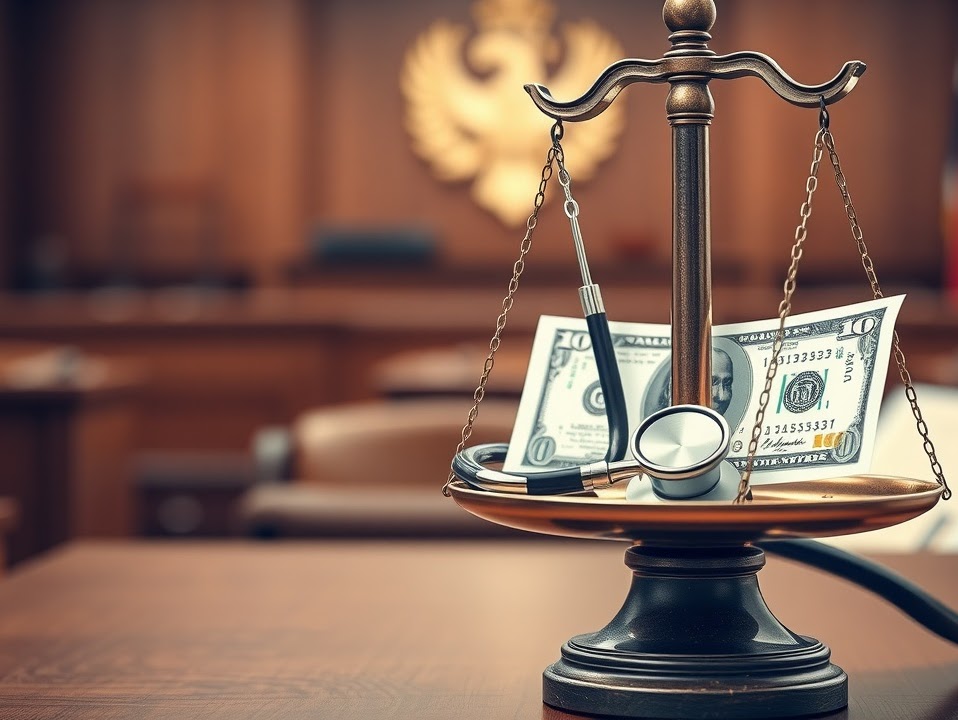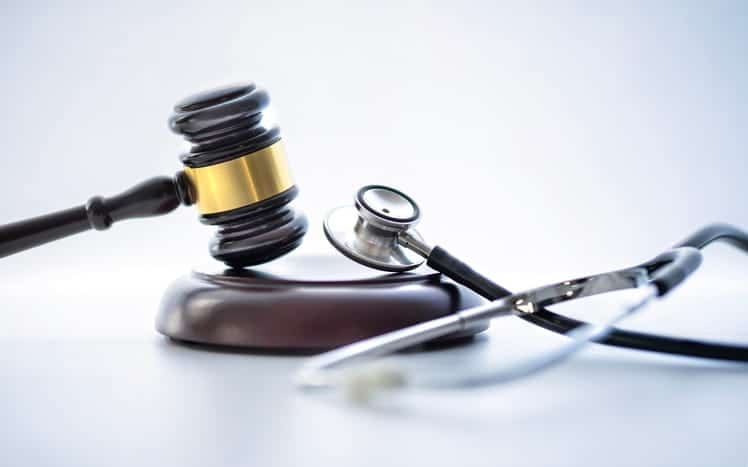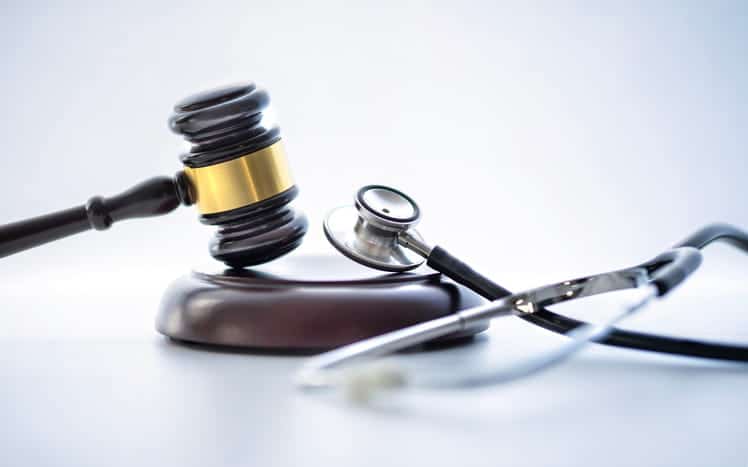Common Types of Personal Injury Cases
Personal injury law is a vast and intricate field that seeks to provide justice and compensation for individuals who have suffered harm due to the negligence or wrongful actions of others. Common types of personal injury cases serve as a testament to the various situations where people might find themselves in need of legal recourse. Understanding these scenarios not only helps potential plaintiffs recognize their rights but also sheds light on the broader implications of safety and responsibility in society.
One prevalent type of personal injury case involves motor vehicle accidents, which account for a significant portion of claims. These can range from car collisions to motorcycle crashes and even pedestrian incidents. The complexity of these cases often lies in determining fault, assessing damages, and navigating insurance claims. With distracted driving on the rise due to technology use, these cases frequently highlight the need for stringent adherence to traffic laws and increased awareness about road safety.
Slip and fall accidents represent another common category within personal injury law. Such incidents typically occur on premises owned or maintained by another individual or entity, thereby invoking premises liability laws. Whether it's a slippery floor at a grocery store or an uneven sidewalk outside an office building, property owners are generally required to ensure safe conditions for visitors. Proving negligence in these cases often hinges on demonstrating that the owner knew-or should have known-about the hazard but failed to address it appropriately.
Medical malpractice is also a significant area within personal injury law, involving claims against healthcare professionals whose negligent actions result in patient harm. This could include misdiagnosis, surgical errors, or improper treatment plans. Medical malpractice cases are particularly complex due to their reliance on expert testimony to establish what constitutes acceptable medical practice versus negligence.
Product liability cases arise when consumers suffer injuries from defective or dangerous products. Whether it's faulty machinery causing workplace injuries or contaminated food leading to illness, manufacturers can be held accountable if they fail to ensure their products' safety before reaching consumers. These cases underscore the importance of rigorous testing and quality control measures in product manufacturing processes.
Lastly, workplace injuries form another crucial segment under personal injury law. While workers' compensation provides benefits for job-related injuries regardless of fault, there are instances where additional legal action may be warranted-particularly if third-party negligence contributed significantly to the incident.
In conclusion, common types of personal injury cases reflect diverse aspects of daily life where individuals might face unexpected harm through no fault of their own. They serve as essential mechanisms for holding parties accountable while advocating for victim rights and fostering safer environments across various contexts-from roads and workplaces to healthcare settings and consumer markets. As such, understanding these types serves not just those directly involved but benefits society at large by promoting accountability and proactive risk management strategies.
Understanding Liability and Negligence
Understanding liability and negligence is crucial in the realm of personal injury law. These concepts form the backbone of many legal disputes, especially those concerning accidents and injuries. To navigate these issues effectively, it's essential to grasp what each term means and how they interact within the legal system.
Liability refers to the state of being legally responsible for something, particularly in terms of financial compensation for harm or damages caused by one's actions or omissions. In personal injury cases, determining liability is often a complex process that involves examining the circumstances surrounding an incident to establish who should be held accountable. This determination can involve multiple parties, including individuals, companies, or even government entities.
Negligence is a specific type of liability centered on carelessness or failure to take reasonable care, which results in injury or damage to another person. To prove negligence in a personal injury lawsuit, four elements must typically be established: duty of care, breach of duty, causation, and damages. Duty of care refers to the obligation one has to avoid causing harm to others. Breach of duty occurs when someone fails to meet this standard. Causation links the breach directly to the injury sustained by the plaintiff. Finally, damages refer to the actual harm suffered by the victim.
One illustrative example might be a car accident where a driver runs a red light and hits another vehicle. The negligent action-running the red light-breached a duty of care owed by all drivers on public roads. If this breach directly caused injuries to another person involved in the accident, then negligence could be established.
The interplay between liability and negligence is pivotal because establishing negligence often leads directly to finding someone liable for an incident. However, not all liabilities stem from negligent acts; some may arise from strict liability situations where fault or intent does not need proving.
In conclusion, understanding liability and negligence provides a foundation for navigating personal injury law effectively. These concepts help delineate responsibility and ensure that victims receive fair compensation for their losses while promoting societal standards of conduct through accountability mechanisms. As such, both laypersons and legal professionals benefit from comprehending these fundamental principles as they seek justice within our legal system.
The Role of Insurance in Personal Injury Claims
In the realm of personal injury law, insurance plays an indispensable role, acting as a pivotal bridge between the injured party and fair compensation. When individuals suffer harm due to accidents or negligence, pursuing a personal injury claim becomes essential for recovering damages. Insurance companies often become key players in this process, providing the financial resources necessary to cover medical expenses, lost wages, and other related costs.
At its core, the purpose of insurance in personal injury claims is to mitigate risk and provide a safety net for both the claimant and the insured party. For those who have been injured, having access to an insurance policy-whether it be auto insurance in a car accident case or liability insurance in a slip-and-fall scenario-ensures that there is a source of funds available to cover their losses. This can be crucial in alleviating the immediate financial burdens that arise from unforeseen injuries.
Insurance companies are tasked with assessing claims and determining appropriate payouts based on policy terms and coverage limits. They employ adjusters and legal teams who thoroughly investigate incidents, evaluate medical records, and negotiate settlements with claimants or their legal representatives. The presence of an insurer can streamline the claims process by providing structured guidelines for negotiations and settlements.
However, this relationship is not without its challenges. Insurance companies are businesses that aim to protect their bottom lines; thus, they may attempt to minimize payout amounts or deny claims altogether. This is where experienced personal injury attorneys come into play. They advocate on behalf of injured clients to ensure they receive fair compensation that accurately reflects their suffering and future needs.
Moreover, understanding one's own insurance policy is critical for anyone involved in a personal injury situation. Policyholders must be aware of coverage details like bodily injury liability limits or underinsured motorist protection to better navigate potential claims. This knowledge empowers them during negotiations with insurers and helps set realistic expectations regarding potential recoveries.
In conclusion, insurance serves as both a shield against overwhelming financial strain for injured parties and a mechanism for facilitating resolution in personal injury claims. While it offers significant benefits by ensuring access to necessary funds post-accident, navigating interactions with insurers requires careful consideration and often professional guidance. As such, individuals involved in personal injury cases should approach these situations equipped with knowledge about their policies while being prepared to advocate fiercely-or enlist someone who can-when disputes over compensation arise. Through this intricate dance between coverage provisions and legal advocacy, justice can be more swiftly served within the landscape of personal injury law.
Steps to Take After an Accident
Experiencing an accident can be a shocking and overwhelming event, often leaving individuals unsure of what to do next. The moments immediately following an accident are crucial, not only for your health and safety but also for protecting your legal rights. Understanding the appropriate steps to take after an accident is essential, especially when dealing with potential personal injury claims.
First and foremost, ensure that you and any passengers are safe. If possible, move away from traffic or any further danger. Once in a safe location, check for injuries. Regardless of how minor they may seem, it's important to seek medical attention promptly. Some injuries might not be immediately apparent due to adrenaline or shock; therefore, consulting a healthcare professional ensures proper diagnosis and treatment.
After addressing immediate medical needs, it's vital to contact local authorities. Filing a police report provides an official record of the incident, which can be invaluable if legal action becomes necessary later on. Be sure to provide accurate information without speculating about details you're uncertain of; stick to the facts as best as you can recall them.
In addition to reporting the accident to law enforcement, gather as much evidence as possible from the scene. Take photographs of vehicle damage, road conditions, traffic signs, and any visible injuries sustained by those involved. Collect contact information from witnesses who might have seen the accident occur; their accounts can provide additional support in case of conflicting stories.
Communication with other parties involved should be limited strictly to exchanging necessary information like names, phone numbers, insurance details, and driver's license numbers. Avoid discussing fault or apologizing at the scene-statements made out of politeness or shock could inadvertently affect your claim.
Next on your list should be notifying your insurance company about the accident. Provide them with truthful accounts of what occurred while maintaining consistency with what was reported to law enforcement officials.
Once these initial steps are completed, consider seeking legal advice from a qualified personal injury attorney. Navigating insurance claims and potential legal proceedings can be complex; having expert guidance ensures that you understand your rights and options fully.
A lawyer will evaluate factors such as liability determination and compensation eligibility based on damages like medical expenses, lost wages due to missed workdays, pain experienced during recovery periods-and anticipate future costs related directly back into said incident itself (e.g., long-term care). Engaging professional representation helps safeguard against common pitfalls associated therein (i.e., accepting lowball offers) whilst maximizing rightful restitution owed under prevailing circumstances dictated by pertinent state/federal regulations surrounding personal injury law specifically tailored towards individual case nuances encountered therein accordingly).
In conclusion: accidents happen unexpectedly-but knowing precisely what actions need undertaking immediately thereafter empowers individuals protect themselves effectively both physically/legally-speaking moving forward beyond initial aftermath thereof faced potentially through no fault own making ultimately altogether altogether!
Filing a Personal Injury Lawsuit
Filing a personal injury lawsuit is a significant step in the pursuit of justice and compensation for those who have suffered harm due to another's negligence or intentional actions. Personal injury law, a branch of civil law, seeks to provide relief to individuals who have been physically or emotionally injured as a result of wrongful conduct by others. This legal process can be complex and daunting, yet it holds the promise of remedying wrongs and restoring balance in the lives of those affected.
At its core, personal injury law revolves around the principle that individuals should be held accountable for harm they cause. Whether it's an automobile accident, slip and fall incident, medical malpractice, or even defamation, the fundamental aim is to ensure that victims receive fair compensation for their injuries and losses. This may include medical expenses, lost wages, pain and suffering, and other damages that have thrown their lives into disarray.
The journey of filing a personal injury lawsuit typically begins with consultation with an attorney who specializes in this field. An experienced lawyer evaluates the circumstances surrounding the incident to determine if there are grounds for a claim. They will assess evidence such as medical records, eyewitness accounts, police reports, and any other pertinent documentation that supports the victim's case. This initial stage is crucial as it lays the groundwork for building a strong argument.
Once it's determined that pursuing legal action is viable, the next step involves formally filing a complaint in court against the party deemed responsible-the defendant. The complaint sets forth allegations concerning how the defendant's actions led to the plaintiff's injuries and specifies what compensation is being sought. Following this submission, both parties engage in what is known as "discovery," where they exchange information pertinent to the case through depositions, interrogatories, and document requests.
Negotiation often plays a pivotal role during these proceedings. Many personal injury cases are settled out of court when parties reach an agreement on compensation without proceeding to trial. Settlements can offer quicker resolutions with less stress compared to lengthy court battles. However, if negotiations fail or if either party insists on going before a judge or jury for resolution-as sometimes happens when liability or damages are disputed-a trial ensues.
A successful personal injury lawsuit culminates in either settlement or verdict favoring compensation for injuries sustained by plaintiffs due largely thanks also due diligence invested throughout process from inception until conclusion whether settled amicably outside courtroom doors inside them via adjudication.
In conclusion filing such suit embodies not just quest reparations tangible benefits extends metaphorically towards reclaiming sense control amidst chaos wrought upon unsuspecting lives accidents unfortunate events alike each step taken methodical measured manner guided expert counsel ultimately serves vindicate restore semblance normalcy thereby underscoring importance accountability within society fostering environment respect safety all concerned therein lies essence purpose behind undertaking seemingly formidable task pursuing rightful recompense through legal channels available under rubric personal injury law today tomorrow beyond too alike time immemorial testament enduring human spirit resilience face adversity unyielding dedication securing justice deservedly so always evermore timeless endeavor noble cause universally understood deeply cherished amongst peoples world over infinite capacity empathy compassion toward one another fellow travelers shared journey existence together evermore forward onward bound hope always eternal flame burning bright light shining path illuminated truth equity fairness justice prevailing forevermore onward upward bound future filled promise potential aplenty indeed amen then let us proceed accordingly shall we?
Potential Compensation and Damages
In the realm of personal injury law, the concepts of potential compensation and damages serve as pivotal elements that significantly influence the trajectory of legal proceedings and the eventual resolution for injured parties. Personal injury law is a vast field encompassing various situations where individuals sustain harm due to another's negligence or intentional actions. Whether arising from automobile accidents, medical malpractice, slip-and-fall incidents, or defective products, the pursuit of justice often centers around securing appropriate compensation for victims.
Potential compensation in personal injury cases generally falls into two broad categories: economic and non-economic damages. Economic damages are relatively straightforward; they cover tangible losses such as medical expenses, lost wages, and rehabilitation costs. These quantifiable losses provide a clear picture of the financial strain imposed on the victim by their injuries. For instance, if an individual is hospitalized following a car accident, all associated medical bills can be claimed under economic damages. Moreover, if their injuries result in an inability to work temporarily or permanently, lost income becomes a crucial element of these claims.
On the other hand, non-economic damages delve into more abstract but equally significant aspects such as pain and suffering, emotional distress, loss of enjoyment of life, and even disfigurement. Unlike economic damages that rely on concrete receipts and invoices for calculation, these require careful consideration by legal experts to assign a fair monetary value. Pain and suffering can vary dramatically from case to case; thus, they often pose intricate challenges in litigation.
An additional layer exists with punitive damages-awarded not merely to compensate but to punish egregious behavior by defendants deemed willfully negligent or maliciously harmful. While not applicable in every personal injury case, punitive damages serve as a societal deterrent against particularly reckless conduct.
Navigating the labyrinthine process of determining potential compensation requires skilled legal representation adept at evaluating both current impacts and future implications of an injury on a victim's life. Attorneys must meticulously gather evidence-from medical reports detailing physical harm to testimonies illustrating psychological trauma-to build compelling arguments for maximum compensation.
Furthermore, insurance companies frequently play a critical role in these proceedings. They may offer settlements aiming to minimize payouts; therefore understanding when to negotiate versus when to proceed with litigation becomes paramount for plaintiffs seeking just recompense.
Ultimately, potential compensation and damages within personal injury law strive towards restoring balance disrupted by an unfortunate event-endeavoring not only financially but also emotionally wherein victims may find some solace amid adversity's aftermath through rightful acknowledgment of their suffering via judicious awards tailored uniquely toward each individual's ordeal.
In conclusion,the journey through personal injury claims embodies more than mere numbers-it signifies recognition,fairness,and hope-a testament that through legal redress,victims might reclaim both dignity lost during despairing times as well as resources needed towards healing pathways ahead.
Choosing the Right Personal Injury Lawyer
Choosing the right personal injury lawyer is a crucial decision that can significantly impact the outcome of your case and your future well-being. Personal injury law is a specialized field that requires not only legal expertise but also a deep understanding of the emotional and physical toll on victims. Thus, selecting an attorney who is both skilled and empathetic is essential.
First and foremost, experience should be at the top of your checklist when evaluating potential lawyers. A seasoned personal injury attorney will have a track record of successfully handling cases similar to yours. This experience allows them to anticipate challenges, effectively negotiate with insurance companies, and advocate passionately on your behalf in court if necessary. When researching attorneys, take note of their history with cases like yours-whether it's car accidents, medical malpractice, or workplace injuries.
Equally important is the lawyer's reputation within the legal community and among past clients. Testimonials and reviews can provide insight into how a lawyer operates-are they communicative? Do they demonstrate genuine care for their clients? Are they known for their integrity? A reputable lawyer will often have positive feedback from those they've represented, indicating that they're trustworthy and client-focused.
Accessibility is another vital factor in your decision-making process. The aftermath of an injury can be overwhelming, so having an attorney who is readily available to answer questions and provide updates can alleviate some stress. During initial consultations, assess whether the lawyer makes you feel heard and understood or if you're just another case number.
Finally, consider the financial aspect of hiring an attorney. Most personal injury lawyers work on a contingency fee basis-meaning they only get paid if you win your case. Discussing fees upfront ensures there are no surprises later on and helps you understand any costs associated with pursuing your claim.
In conclusion, choosing the right personal injury lawyer involves careful consideration of their experience, reputation, accessibility, and financial terms. By taking these factors into account, you increase your chances of finding an advocate who will not only fight for fair compensation but also support you through one of life's most challenging times. Trust in this process ensures that you have someone capable by your side as you seek justice and healing after an injury.





